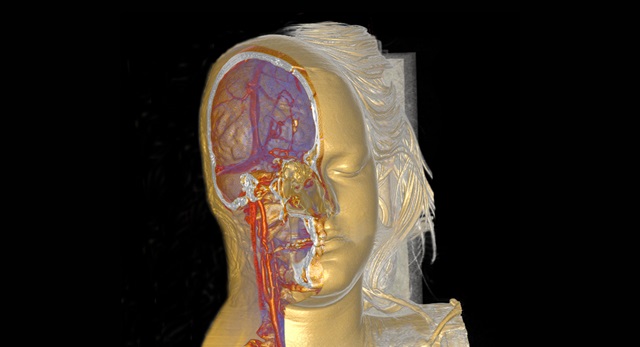
Radiology means imaging the inside of the human body for the purpose of making a diagnosis. The term medical radiology includes diagnostic radiology as well as intervention - treatment guided by images.
Medical image science comprises techniques and processes intended to create images of a person for medical purposes. It reaches across disciplines such as radiology, endoscopy, microscopy, image processing and visualization.
